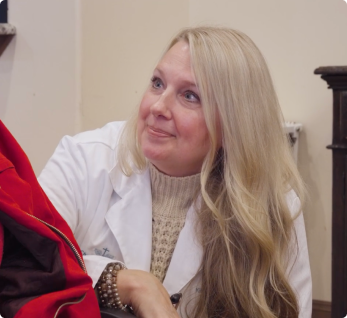
Understanding Dementia Progression: A Guide to the FAST Scale
Understanding Dementia Progression: A Guide to the FAST Scale
A dementia diagnosis can feel overwhelming, triggering questions about what to expect and how to prepare. One valuable tool used by caregivers and medical professionals to better understand and track the progression of dementia is the Functional Assessment Staging Tool (FAST).
What Is the FAST Scale?
The FAST Scale, developed by Dr. Barry Reisberg, is designed to assess the progression of dementia, particularly Alzheimer’s disease. It provides a detailed framework for understanding the changes in an individual’s ability to perform daily tasks. Unlike other tools, the FAST Scale focuses on functional abilities rather than solely cognitive decline, making it a helpful resource for families and care teams.
Take our 5 Minute FAST Scale Survey
Why Is the FAST Scale Important?
The FAST Scale offers clarity during an otherwise uncertain journey by:
- Tracking Progression: It helps caregivers and healthcare professionals identify how far the disease has progressed and anticipate future changes.
- Guiding Care Decisions: Understanding where someone is on the scale ensures that appropriate support, resources, and care plans are in place.
- Differentiating Diagnoses: The scale can indicate whether symptoms align with Alzheimer’s or another form of dementia, which is crucial for determining treatment options.
How the FAST Scale Supports Families
For families of individuals with dementia, the FAST Scale serves as a guide to understanding the journey ahead. It breaks down the progression of dementia into detailed stages, highlighting specific functional challenges that may arise. This information empowers families to plan for care transitions, including when to consider professional memory care or hospice services.
One key feature of the FAST Scale is that Alzheimer’s disease progression follows a sequential path. If an individual demonstrates symptoms from later stages without experiencing earlier ones, it could suggest a condition other than Alzheimer’s, which may have different care needs or treatment options.
You can see where your loved one is on the scale today:
Using the FAST Scale for Care Eligibility
Determining when hospice care is appropriate can be difficult for families. The FAST Scale helps by identifying when an individual’s condition has reached late-stage dementia. Typically, individuals qualify for hospice services when they:
- Require 24/7 care and supervision.
- Are unable to manage basic tasks like eating or personal hygiene.
- Have limited or no ability to communicate meaningfully.
These benchmarks help families access supportive services to ensure their loved one’s comfort and dignity as the disease progresses.
Take our 5 Minute FAST Scale Survey
How Avalon Memory Care Can Help
Navigating a dementia diagnosis is never easy, but you don’t have to do it alone. At Avalon Memory Care, we’re experienced in using the FAST Scale to help families understand what lies ahead and provide compassionate care at every step of the journey.
If you have questions about the FAST Scale, need resources, or would like guidance for your loved one, contact us at 469-397-0680. We’re here to help you make informed decisions and provide peace of mind during this challenging time.
Get started by taking our 5 minute FAST Scale survey here.
See More Articles
- Visiting Your Aging Parent With Memory Loss at Avalon Memory Care
As a loving son or daughter, you naturally want the best of care for your senior parent. The compassionate assisted living caregivers at Avalon Memory Care want you to know that while your parent is living with us, he or she will receive nothing less than respectful, loving care within our comfortable, safe, and fully-staffed
- Celebrating New Year’s Day in Memory Care
Families often find that celebrations with their loved ones in memory care are easier when they embrace new traditions. For instance, it may not be practical to expect your loved one to stay up until midnight on New Year’s Eve. Instead, consider throwing a New Year’s Day celebration, complete with a countdown to the first
- Hope For the Future: Emerging Alzheimer’s Research
According to the latest statistics, as many as 5.5 million Americans are living with Alzheimer’s disease, and its prevalence is only expected to rise in the next few decades. At the same time, however, research into treatments for the condition is accelerating. With every passing year, we move a little further down the road toward
Testimonials
Downloadable Resources
We Are Avalon
Discover the heart of our community; download ‘We Are Avalon’ to get to know our dedicated team and our commitment to providing a warm, family-like environment.
Transitional Care Guide
If you’re considering a transition, we’re here to help; download our Transitional Care Guide for compassionate guidance through each step of the process.
Schedule a Tour
Visit one of our 30+ campuses and experience our unique approach to memory care.












